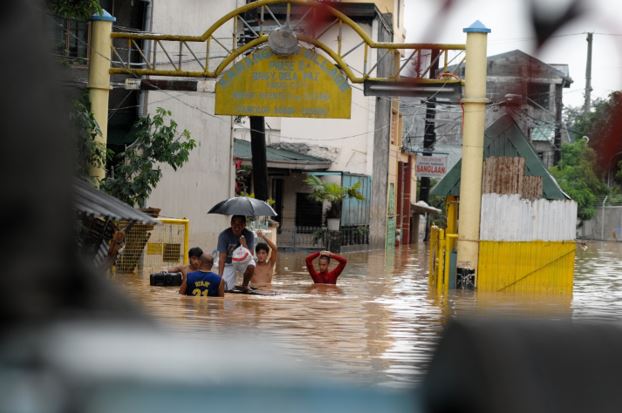The importance of Community-based Disaster Risk Reduction and Management
The importance of Community-based Disaster Risk Reduction and Management
The disaster preparation of a community determines a person’s safety during a disaster. No matter how well prepared they are for all possible disasters, all of their efforts will be for naught if their community is unable to respond effectively.
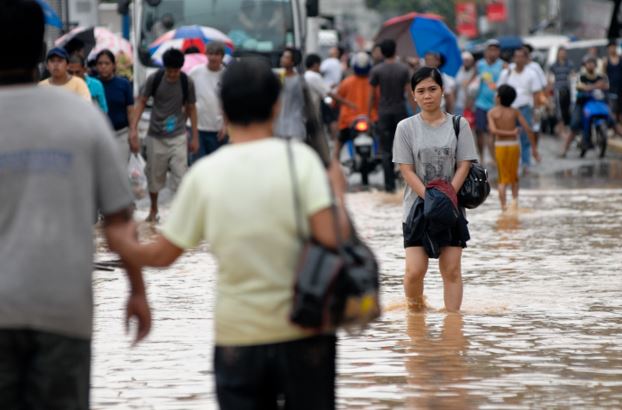
This is why a CDRRMP (community-based disaster risk reduction and management plan) is so important. It assigns the responsibility of disaster preparedness to the entire community, ensuring that organizations, homes, and individuals may work together to make their community more resilient in the case of disaster.
CBDRRMP is critical, especially for countries like the Philippines that are very vulnerable to catastrophes. The Philippines is prone to earthquakes, volcanic eruptions, and typhoons due to its location within the Pacific Ring of Fire and typhoon belt. In the 2020 World Risk Index, the country was placed 9th in the world in terms of disaster vulnerability.
Flooding is one of the most prevalent events in the Philippines, emphasizing the significance of good floodwater control. Local governments are doing this in a variety of ways. Structure-based efforts include large underground drainage systems, floodways, pumping stations, flood warning systems, and urban greening, as well as non-structural efforts like reducing plastic trash, which is a major cause of urban flooding.
Filipinos must also prepare for earthquakes due to the country’s location on five active fault lines. It is for this reason that many structures have earthquake-resistant characteristics. Periodic earthquake exercises done at the national and organizational levels are helping to strengthen the country’s seismic resistance.
These are excellent instances of CBDRR in action, where authorities and individuals collaborate to guarantee the safety of people and property in their communities.
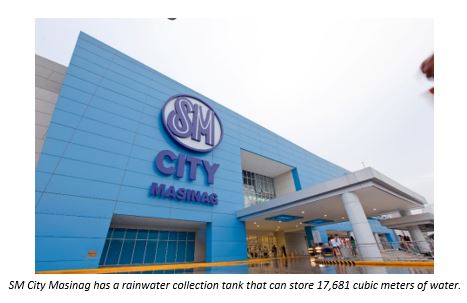
SM has long been committed to promoting Catastrophe Risk Reduction and Management (DRRM) in its communities as a trusted and responsible developer of integrated properties, as seen by several of its malls employing infrastructure design oriented on disaster resilience. SM devotes 10% of its capital expenditures to disaster-resilient measures, one of which is the installation of water management design features.
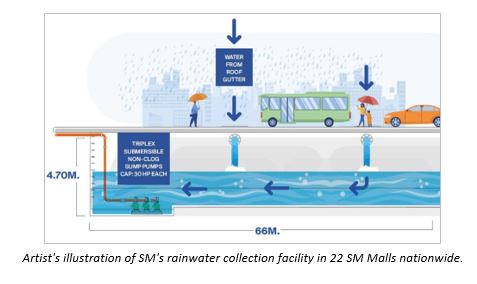
SM City Marikina, for example, is elevated by many rows of concrete stilts to protect tenants and mall visitors during heavy floods. For further safety during storm surges, the SM Mall of Asia was built with a storm surge barrier, and several malls use catchment tanks to recycle rainwater.
There are 22 SM Malls across the country with rainwater collection tanks beneath the mall. These malls can collect and store 79,880 cubic meters of rainwater, which is the equivalent of 32 Olympic-sized swimming pools.
“Wherever SM is, we try to help our communities become resilient to changing weather patterns,” explains Arch. Fides Garcia-Hsu, Vice President of SM Engineering, Design and Development. “Nationwide, we have 22 malls equipped with rainwater catchment facilities that help rain water management to avoid flash floods for surrounding communities.”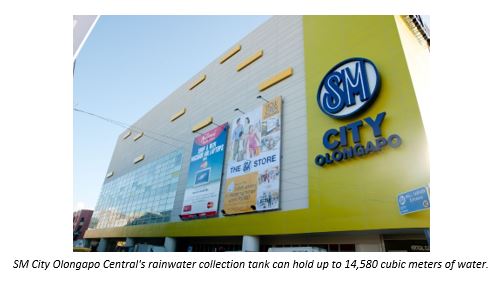
Several projects focusing on capacity-building for its stakeholders are supporting these efforts. It includes Disaster Risk Resilience Management workshops and learning sessions for its employees, as well as quarterly national simultaneous earthquake drills and an annual Emergency Preparedness Forum for people with disabilities and the elderly, two of society’s most vulnerable groups during disasters.
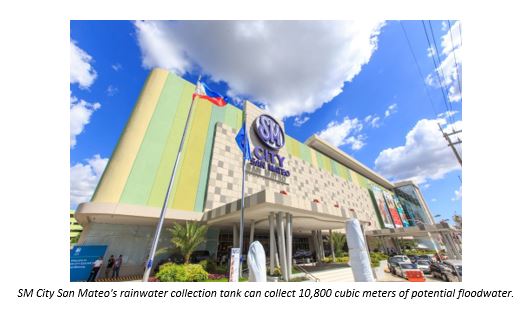
SM Prime has also created long-term ties with organizations that push for a disaster-resilient Philippines, in keeping with its multi-stakeholder strategy. Collaborations include, among others, ARISE-Philippines, the National Resilience Council, the National Disaster Risk Reduction and Management Council, the Office of Civil Defense, and the Bureau of Fire Protection.

